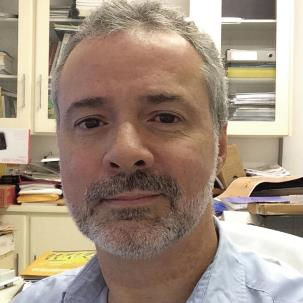New Emerging Technologies in the Combination of Conventional Techniques in Improving the Quality of Dairy Products
A special issue of Dairy (ISSN 2624-862X). This special issue belongs to the section "Milk Processing".
Deadline for manuscript submissions: closed (30 April 2021) | Viewed by 4150
Special Issue Editors
Interests: quantification and removal of mycotoxins; aflatoxin decontamination in food commodities; removal/degradation of different toxins in food commodities
Special Issues, Collections and Topics in MDPI journals
2. Department of Technology of Chemistry, Azerbaijan State Oil and Industry University, 16/21 Azadliq Ave, Baku AZ1010, Azerbaijan
Interests: mycotoxins; food contamination; food safety; potentially toxic elements (PTEs); pesticide; detoxification and essential oils
Special Issues, Collections and Topics in MDPI journals
Special Issue Information
Milk and dairy products are commonly consumed by people of all age groups, especially children. Accordingly, milk is one of the major food sources in human nutrition because of its biochemical complexity, thus providing several important nutrients, including all essential amino acids. Confirmation of these nutritive benefits is the extensive and constant worldwide consumption of milk and dairy products. However, milk can be a vehicle to several types of biological, chemical, and physical contaminants, which may lead to serious health risks to the consumers. While there are some conventional techniques (such as filtration and heat treatment) to eliminate or reduce these three types of contaminants (physical, chemical, and biological), some of the newly introduced methods could improve the decontamination process of dairy products to achieve safe levels of the abovementioned contaminants. Although the application of some emerging techniques in reducing the levels of contaminates, e.g., high-pressure processing (HPP), has been extensively investigated through the literature, there are still important gaps regarding the employment of other available techniques alone or in combination with conventional techniques.
In this regard, the current Special Issue aims to collect all available data regarding emerging technologies in the combination of conventional techniques to improve the quality of dairy products to provide insights and further road maps for interested parties, including academics and industries as well as research institutes. For this purpose, the guest editors are inviting authors to submit original research, reviews (narrative and systematic), risk assessment studies, and short note articles.
Prof. Dr. Carlos Augusto Fernandes De Oliveira
Dr. Amin Mousavi Khaneghah
Guest Editors
Manuscript Submission Information
Manuscripts should be submitted online at www.mdpi.com by registering and logging in to this website. Once you are registered, click here to go to the submission form. Manuscripts can be submitted until the deadline. All submissions that pass pre-check are peer-reviewed. Accepted papers will be published continuously in the journal (as soon as accepted) and will be listed together on the special issue website. Research articles, review articles as well as short communications are invited. For planned papers, a title and short abstract (about 100 words) can be sent to the Editorial Office for announcement on this website.
Submitted manuscripts should not have been published previously, nor be under consideration for publication elsewhere (except conference proceedings papers). All manuscripts are thoroughly refereed through a single-blind peer-review process. A guide for authors and other relevant information for submission of manuscripts is available on the Instructions for Authors page. Dairy is an international peer-reviewed open access quarterly journal published by MDPI.
Please visit the Instructions for Authors page before submitting a manuscript. The Article Processing Charge (APC) for publication in this open access journal is 1200 CHF (Swiss Francs). Submitted papers should be well formatted and use good English. Authors may use MDPI's English editing service prior to publication or during author revisions.
Keywords
- non-thermal treatments
- high pressure processing (HPP)
- pulsed electric fields (PEFs)
- ultrasound, irradiation
- thermal treatments
- pasteurization
- sterilization
- emerging technologies
- decontamination
- fermentation






